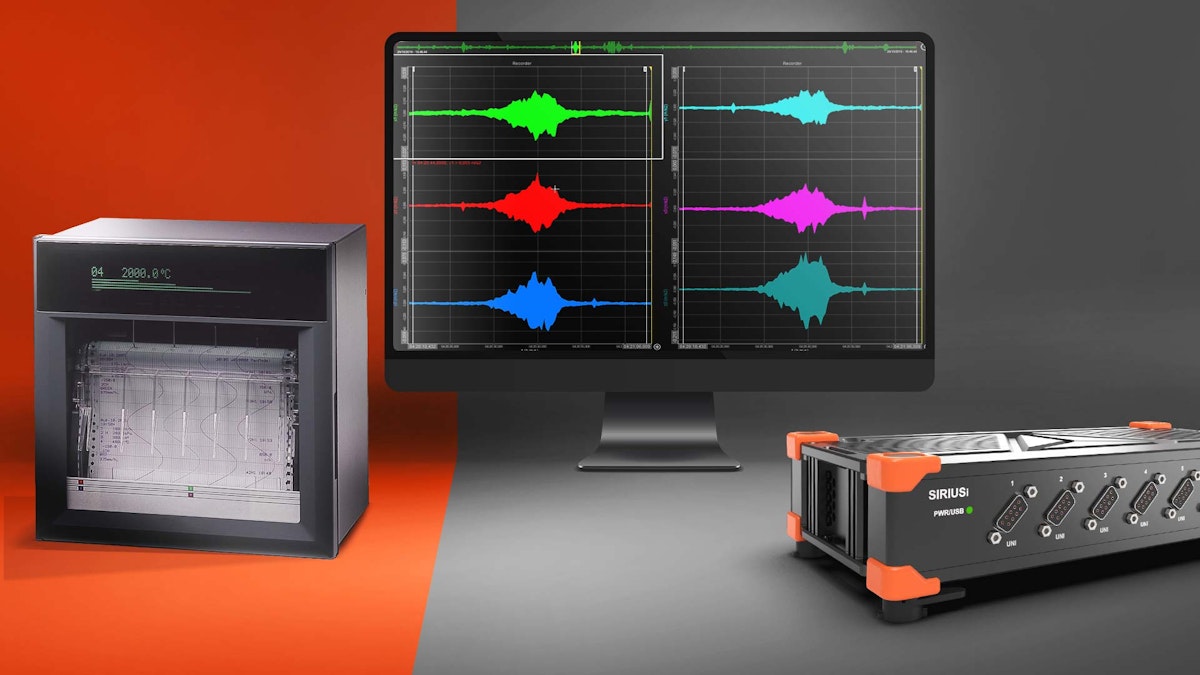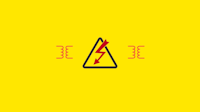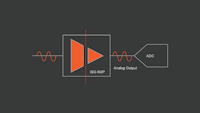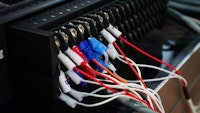Table of contents
Browse categories
Browse authors
 AB
ABAlberto Boffi
 AL
ALAlessia Longo
 AH
AHAl Hoge
 AB
ABAljaž Blažun
 BJ
BJBernard Jerman
 BČ
BČBojan Čontala
 CF
CFCarsten Frederiksen
 CS
CSCarsten Stjernfelt
 DC
DCDaniel Colmenares
 DF
DFDino Florjančič
 EB
EBEmanuele Burgognoni
 EK
EKEva Kalšek
 FB
FBFranck Beranger
 GR
GRGabriele Ribichini
Glacier Chen
 GS
GSGrant Maloy Smith
 HB
HBHelmut Behmüller
 IB
IBIza Burnik
 JO
JOJaka Ogorevc
 JR
JRJake Rosenthal
 JS
JSJernej Sirk
 JM
JMJohn Miller
 KM
KMKarla Yera Morales
 KD
KDKayla Day
 KS
KSKonrad Schweiger
Leslie Wang
 LS
LSLoïc Siret
 LJ
LJLuka Jerman
 MB
MBMarco Behmer
 MR
MRMarco Ribichini
 ML
MLMatic Lebar
 MS
MSMatjaž Strniša
 ME
MEMatthew Engquist
 ME
MEMichael Elmerick
 NP
NPNicolas Phan
 OM
OMOwen Maginity
 PF
PFPatrick Fu
 PR
PRPrimož Rome
 RM
RMRok Mesar
 RS
RSRupert Schwarz
 SA
SASamuele Ardizio
 SK
SKSimon Kodrič
 SG
SGSøren Linnet Gjelstrup
 TH
THThorsten Hartleb
 TV
TVTirin Varghese
 UK
UKUrban Kuhar
Valentino Pagliara
 VS
VSVid Selič
 WK
WKWill Kooiker
How To Replace Chart Recorders with a Dewesoft Digital DAQ System

October 9, 2025
In this article, we will discuss how you can replace oscillographic chart recorders with the SIRIUS digital DAQ (Data Acquisition System). By reading this article you will:
See how digital DAQ systems can be easier to use than old-fashioned chart recorders
Learn how digital DAQ systems provide enhanced capabilities
Understand the advantages of digital DAQ systems, including lower cost and reduced maintenance
Are you ready? Let’s begin…

Introduction
Everyone focuses on computer-based DAQ devices today, but there are still test and measurement applications where 1980’s style chart recorders are being used. Since the 1980s, as most industries moved away from chart recorders and replaced them with PC-based data acquisition products, engineers and technicians in certain applications continued using them. In fact, today you will still find a relatively large number of chart recorders in daily use at many power plants.
Why is this?
Power companies (particularly nuclear ones) must document a wide range of parameters according to strict regulations. Chart recorders have long been the main way of documenting these. Forty and fifty years ago, the ability of these instruments to produce a paper output was a real convenience. There were few (if any) notebook computers available for testing, and most engineers didn’t even have a computer at their desks.
Today, computers that are connected (wired and wirelessly) to local and networked printers are everywhere, and accessible to virtually everyone. It’s much less expensive to print charts, graphs, and reports using office printers compared to the proprietary thermal paper that most recorders require. In addition, charts and graphs printed on thermal paper fade away over time and have to be photocopied onto office paper for data preservation.
Despite the fact that the availability of computers has changed dramatically, there is a long history of chart recorder usage at some power companies, which continue using them today. In this article, we will show how these recorders are being replaced with better, smaller, and more modern DAQ systems.
What is a chart recorder?
Chart recorders are electromechanical instruments that write data onto a moving strip or a fixed sheet of paper. There are several main types:
Strip Chart Recorders
Circular Chart Recorders
X-Y Recorders
Oscillographic Recorders
Strip chart recorders
Strip Chart Recorders are low bandwidth and often use colored ink pens to draw signals onto a roll or fanfold paper. Strip chart recorders are often permanently mounted into a panel, although benchtop models are also available for temporary use applications. Strip chart recorders are most often used to record data from electrical signals, temperature, and humidity in manufacturing and process applications.
Circular chart recorders
Circular Chart Recorders are written onto a single piece of round paper that rotates slowly, usually over a period of days or weeks. These instruments are mostly used for long-term documentation of temperature and humidity in manufacturing and process applications.
X-Y recorders
X-Y recorders use one or more pens to draw on a fixed piece of rectangular paper. Unlike the other types mentioned, they do not plot data against time, but rather they plot one signal versus another. For example, they may be used in a process environment to plot pressure versus deflection, speed versus torque, etc.
There are also Data Loggers on the market, but they are meant for low-speed measurements and lack a paper output, so they are not part of this article. You can learn more about data loggers in this article:
Oscillographic chart recorders
In this article, we are focusing on replacing Oscillographic Chart Recorders, not the lower speed strip chart, circular or X-Y chart types mentioned above. Oscillographic recorders offer relatively high bandwidth and a Y-T presentation of data on moving paper.
Early oscillographic recorders had only a paper output, while today they also provide a video display of the data, and can capture data into RAM memory or a hard disk drive. The paper can be used to print during or after data recording. Some models even forego the paper entirely and are called “paperless recorders.”
Oscillographic chart recorders accept voltage inputs, and may often have signal conditioning circuitry that allows them to handle other physical phenomena, such as temperature, vibration, strain, and pressure. Some models can accept pulse inputs for measuring RPM and event counting applications.
Oscillographic chart recorders are usually configured with 8 or 16 analog signal input channels. Because they handle higher-speed data than strip chart recorders, oscillographic recorders typically employ a thermal array printhead that prints the data, text, and even the background grids onto thermally sensitive paper.
Oscillographic recorders are necessarily complex electromechanical devices. Their paper printing mechanisms require maintenance, during which time the instrument can’t produce reports. They also require rolls or packs of proprietary, thermal-sensitive chart paper.
A quick scan on the internet shows that the average price for a 100m (328 ft.) roll or fanfold pack of this paper can cost $50 (or €). This is drastically more expensive than common US letter and A4 size plain office paper.
Today’s chart recorders have incorporated a computer, hard disk storage, and a flat panel display into their chassis. This is fine, except that these are exactly the components that become obsolete very quickly, and are virtually impossible to replace or upgrade in these instruments.
Chart recorders are a familiar solution. They’ve been around for a long time. But there is a better way that costs less and provides a long list of advantages.
The SIRIUS® digital data acquisition system
The SIRIUS DAQ system from Dewesoft is a small, eight-channel DAQ module that connects to any Windows computer via USB. Each input channel is galvanically isolated, which means that the isolation is between channels and between channel and ground.
SIRIUS DualCore® amplifiers have two A/D converters running in parallel at different gains. This guards against unexpected signal level changes and increases the dynamic range to a previously impossible level greater than 160 dB.
A SIRIUS modular “slice” is only 2.54 inches tall (64.5 mm), and 10.5 inches (266 mm) wide. Each SIRIUS slice is carved out of a single block of aluminum on a CNC machine. They are made to withstand the shock and vibration that is common in DAQ applications.
The small size and mass, and lack of moving parts of the SIRIUS DAQ hardware make it inherently more rugged than chart recorders. And because today’s notebook and desktop computers are so powerful yet inexpensive, by removing those functions from the DAQ hardware, their cost and complexity are further reduced. Also, without the computer hardware onboard, SIRIUS is less likely to become obsolete over time. It’s much easier and less inexpensive to replace the computer from time to time than to invest in a new DAQ system.
A standard DualCore® SIRIUS slice can be configured with any eight high-speed amplifiers. There are amplifiers available for:
High voltage (selectable ±1200 V and ±50 V)
Low voltage (selectable ±200 V, ±10 V, ±1 V, ±100 mV)
“UNI” (universal) inputs, including strain, pressure, voltage, IEPE acceleration and vibration, resistance, temperature, and more
Note that many amplifiers accept DSI adapters for even more sensor types, like current, LVDT, thermocouples, RTD sensors, and more.
IEPE accelerometers or microphones
Polarized condenser microphones
Charge accelerometers
Connectors are matched to the input type, so for example, high voltage inputs always use insulated safety banana jacks. Low voltages can be banana jacks, BNC, LEMO, or DB9 connectors. IEPE accelerometers typically use BNC connectors, and strain gauges/universal inputs use multi-pin connectors like DB9 or LEMO, and so on.
In addition, SIRIUS amplifiers can be configured with individual counter inputs for RPM, tacho, and other measurements like duty cycle, incremental encoders, and event counting.
Comparing an oscillographic chart recorder with the SIRIUS data acquisition system
| / | Chart Recorder System | SIRIUS DAQ System |
|---|---|---|
| Analog channel count | Typ. 8 or 16 | 8 or 16 (per slice) |
| Expandable | Rarely | Yes. Multiple slices can be connected to the same computer and synchronized |
| Top sample rate | 1 MS/s (typ.) | DualCore and HD: 200 kS/sSIRIUS HS: 1 MS/sSIRIUS XHS: 15 MS/s |
| Resolution | 16-bit (typ.) | DualCore and HD: 24-bitSIRIUS HS: 16-bitSIRIUS XHS: 24-bit up to 1 MS/s, then 16-bit |
| High voltage input | ±100mV to ±500V (typ.)Isolation specifications vary by manufacturer | HV amp: ±50 V to ±1200 VGalvanic isolation: CAT III 600 V; CAT II 1000 V |
| Computer system | Built-in. Factory upgrade or replacement only | External notebooks or desktop computers can be replaced easily |
| Data display | Built-in 12.1" TFT LCD (1024x768 pixels) (typ.) | Today’s inexpensive notebook computers have 15.6“ 1920x1080 px resolution and are better. |
| Paper output | Built-in thermal array printer, 8.5” wide chart roll, or fanfold paper. Outputs are black and white only. Thermally sensitive paper is required. The paper must be stored in a temperature-controlled environment to avoid erasure. | Standard office printers and paper are used. Outputs can be in full color if desired. Large-scale printers can be used for printing reports of any size. Print-outs are not subject to erasure from high temperatures. |
| Data storage | 64 GB HDD typ. | Today’s notebook computers offer hundreds of GB and the TB of data storage. Additional TB drives can easily be connected via USB. Desktop computers offer even more storage. |
| Obsolescence | The computer-related components become obsolete very quickly and are impractical to upgrade. | Since the computer is completely separate, it can be upgraded or replaced inexpensively at any time. |
| Approx. price | $25k | < $20k (including computer) |
Easy computer operation
The SIRIUS includes a license for DewesoftX software, which is included at no cost. This DAQ software has won numerous awards all around the world for its ease of use and graphical nature. DewesoftX is installed on your Windows computer, which connects to the SIRIUS via a single USB cable, creating a complete measuring system. Because the license is inside the SIRIUS hardware, you can install the software on multiple computers and use any of them for recording, without licensing issues.
So, each user can connect their own computer to operate the SIRIUS, if they want to. You may also wish to use one dedicated computer to run the SIRIUS, but then move the data to your desktop computer for replay, analysis, and report generation. There is no license required on computers used for this purpose.
DewesoftX provides a graphical channel setup. There are no buttons or switches on the SIRIUS hardware: everything is done in the software, including range and filter selection, acquisition speed, triggering, and more.
Once the channels are set up, the software automatically creates a chart recorder view like the one shown below:
You are free to create other displays, using a wide variety of graphical widgets, like analog and digital meters, scope graphs, and more.
You can even create displays that are intended for printing on your black and white or colour office printers, for report generation:
High voltage and high isolation
In power applications, isolation is extremely important. The SIRIUS HV (high voltage module) directly accepts voltages up to ±1200 V and is galvanically isolated.
Galvanic isolation means that the isolation works between and among all channels (“channel-to-channel) AND between each channel and ground (“channel-to-ground”). This is the best possible type of isolation, especially when dealing with potentially dangerous voltages at power plants.
Learn more:


The SIRIUS HV amplifier provides over-voltage protection of 1.8 kV RMS (IN+ to IN-), and 1.4 kV RMS (INx to GND). It is isolated to 1000 V under CAT II, and 600 V under CAT III.
Even the SIRIUS LV low voltage module, which accepts signals from ±100mV to ±200V, is galvanically isolated to 1000V, with over-voltage protection up to 300 V when in the ±200V measuring range.
There are other SIRIUS DualCore amplifiers made to handle other signals and sensors. These include strain gauges, accelerometers, microphones, LVDTs, thermocouples, RTDs, and more. They also include 1000 V galvanic isolation.
Advanced triggering
One of the most important features of power plant applications is triggering. This is often used in looking for breaker faults and trips. Instead of continuously recording for hours or even days in order to capture a breaker trip, you can configure the system to record only when the breaker actually does trip.
This saves disk space by only capturing the data that you need. The system uses a circular buffer while it’s waiting for the fault, so it can be configured to capture a certain amount of data before the event, and then a certain amount of time after the event. You can set it to capture once and stop or to reset itself automatically and capture any number of events.
Adding video to your data
Applications such as PRV (pressure relief valve) testing, can benefit from the video being added to the recording. For simple applications, a standard office webcam can be connected to the computer that is controlling the SIRIUS DAQ system. These DirectX webcams are a very inexpensive way to add a visual reference to any test. They are not terribly fast, however, and they are software synchronized.
When higher speed, hardware synchronized video is needed, you can choose from a selection of DS-CAMs and add them to your system.
DS-CAM cameras provide high-speed video with up to 333 fps (frames per second) at full HD resolution. Lowering the resolution allows you to achieve up to 600 fps. DS-CAM cameras have onboard, real-time JPEG compression that allows real-time streaming directly to the computer's hard drive. Unlike webcams, DS-CAMs are hardware synchronized frame by frame to the SIRIUS chassis using a thin sync cable.
Learn more:

Easy expansion
When more than eight high-speed analog channels are needed, additional SIRIUS slices can be added to the system. They are synchronized with each other and connected to the same computer. They can even be interlocked and stacked together, or kept separate, as required.
Ruggedized USB hubs are available so that you can add more SIRIUS slices than you have USB ports for. You can connect SIRIUS slices together to create a system with more than 100 high-speed channels!
Summary
As the era of the oscillographic recorder draws to a close, engineers and technicians must find a replacement that not only does the job, but is affordable, rugged, easy to use, and expandable.
A single SIRIUS slice combined with a notebook (or desktop) computer running DewesoftX software is the ideal replacement. It meets all of the requirements and goes further, adding modular and inexpensive channel expansion and synchronized video recording capabilities. It represents the optimal way to replace those old oscillographic chart recorders, save money, and move your testing to the next level.
Learn more:


